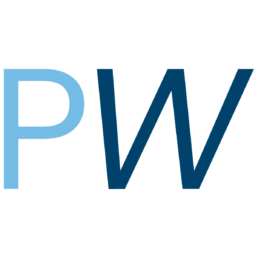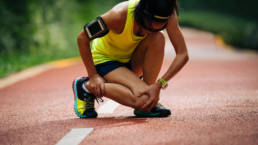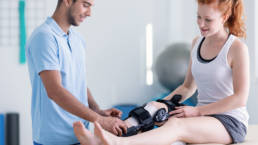What are the effects of massages?
A massage is a simple and safe technique used globally. It is used by Physiotherapists as a means of relaxation, recovery, treatment and in sports as a means of aiding performance.
In this article we will take a look at some research including what different types of massages do to the human body.
Firstly there are some different types of massage techniques to be acquainted with:
- Effleurage: Strokes performed along the length of muscle fibers with light or gentle pressure.
- Petrissage: With moderate to firm pressure, muscles undergo a sequence of kneading, wringing, and scooping motion.
- Dynamic Soft Tissue Mobilization (DSTM): A massage stroke applied with passive or active movement of the muscle group.
- Trigger Point Therapy: Pressure sustained on a myofascial trigger point.
- Cross Friction: A deep technique where a force is applied across the tissue fibers.
Blood Pressure
When it comes to blood pressure, a different technique of massage can bring about a different bodily response:
- Effleurage & Petrissage: Reduces blood pressure.
- Trigger Point Therapy: Increases Blood Pressure.
Mood and Anxiety
Massage is shown to help significantly with low moods and anxiety; here are how all the massage techniques fair when investigated in the realms of Mood & Anxiety:
- Effleurage & Petrissage: Lowered Anxiety Levels, Improvement in Mood Scores, Lowered Cortisol (Stress Hormone) Levels.
- Trigger Point Therapy: Lowered Anxiety Levels, Improvement in Mood Scores, Lowered Cortisol Levels.
- Friction Techniques: Lowered Anxiety Levels, Improvement in Mood Scores, Lowered Cortisol Levels.
Sports Performance
When it comes to sporting performance, it is difficult to determine the exact effect a massage will have on an athlete. Measuring sporting performance is something that may be difficult to determine reliably, as there are always many factors to be taken into account. What is known is that a massage can influence an athlete’s perception of physical recovery and as such help with pre-performance psychological factors, hence, an improvement in performance. In a research determining mood state responses the authors found that cyclist had increased performance after receiving massages.
Flexibility
- Great results in individuals that are “Very Tight”.
- Great short term changes in flexibility that varies with individuals and techniques.
- Effleurage & Petrissage: Some short term changes to length.
- Dynamic Soft Tissue Mobilization (DSTM): Immediate significant changes compared to just effleurage & petrissage.
Strength
As for the subject of strength, there seems to be a correlation between increased strength after a massage. What is important to note is that massage in this case has shown to help restore strength back to a muscle immediately following a fatiguing activity.
In conclusion
As for the research collected; it can be said that while massage can be used to bring about tissue changes, often times it has to be used in conjunction with other treatment modalities to bring about the desired changes. As some changes may not be easily quantified clinically, human perception and self reported findings could be a guiding factor until further investigations clarifies the deeper details and psychological effects a massage may have on the human body.
By Perth Physiotherapist, Wayne Sun
To find out if massage therapy can help you feel free to contact us at Perth Wellness Centre (08) 9321 1964
References
BROOKS CP, WOODRUFF LD, WRIGHT LL, & DONATELLI R. (2005). The immediate effects of manual massage on power-grip performance after maximal exercise in healthy adults. Journal of Alternative and Complementary Medicine (New York, N.Y.). 11, 1093-101.
HOPPER, DIANA, CONNEELY, M., CHROMIAK, F., CANINI, E., BERGGREN, J., & BRIFFA, KATHY. (2005). Evaluation of the effect of two massage techniques on hamstring muscle length in competitive female hockey players. School of Physiotherapy, Curtin University.
CAMBRON JA, DEXHEIMER J, & COE P. (2006). Changes in blood pressure after various forms of therapeutic massage: a preliminary study. Journal of Alternative and Complementary Medicine (New York, N.Y.). 12.
LEIVADI, S., HERNANDEZ-REIF, M., FIELD, T., O’ROURKE, M., D’ARIENZO, S., LEWIS, D., DEL PINO, N., SCHANBERG, S., & KUHN, C. (1999). Massage therapy and relaxation effects on university dance students. Journal of Dance Medicine & Science. 3, 108-112.
MICKLEWRIGHT, D., GRIFFIN, M., GLADWELL, V., & BENEKE, R. (2005). Mood State Response to Massage and Subsequent Exercise Performance. SPORT PSYCHOLOGIST. 19, 234-250.
BARLOW A, CLARKE R, JOHNSON N, SEABOURNE B, THOMAS D, & GAL J. (2004). Effect of massage of the hamstring muscle group on performance of the sit and reach test. British Journal of Sports Medicine. 38, 349-51.
Related Posts
How to Treat a Bad Ankle Sprain?
13 December 2016
Everyone has experienced an ankle sprain at some point in their lives, it may have been a mild one which resolves in a few minutes, or it could be a severe one that last for weeks to months on end. If you have sprained your ankle as a once of incident, and the pain and symptoms were "mild" there is…
0 Comments5 Minutes
I Tried Physiotherapy…
20 June 2016
Every health practitioner has heard the similar form of complaint, where a patient reports having tried treatment X or Y from discipline A or B but had gotten no results. In some rare occasions a patient may be mismanaged by their previous practitioner, however this is very unlikely.
0 Comments7 Minutes


